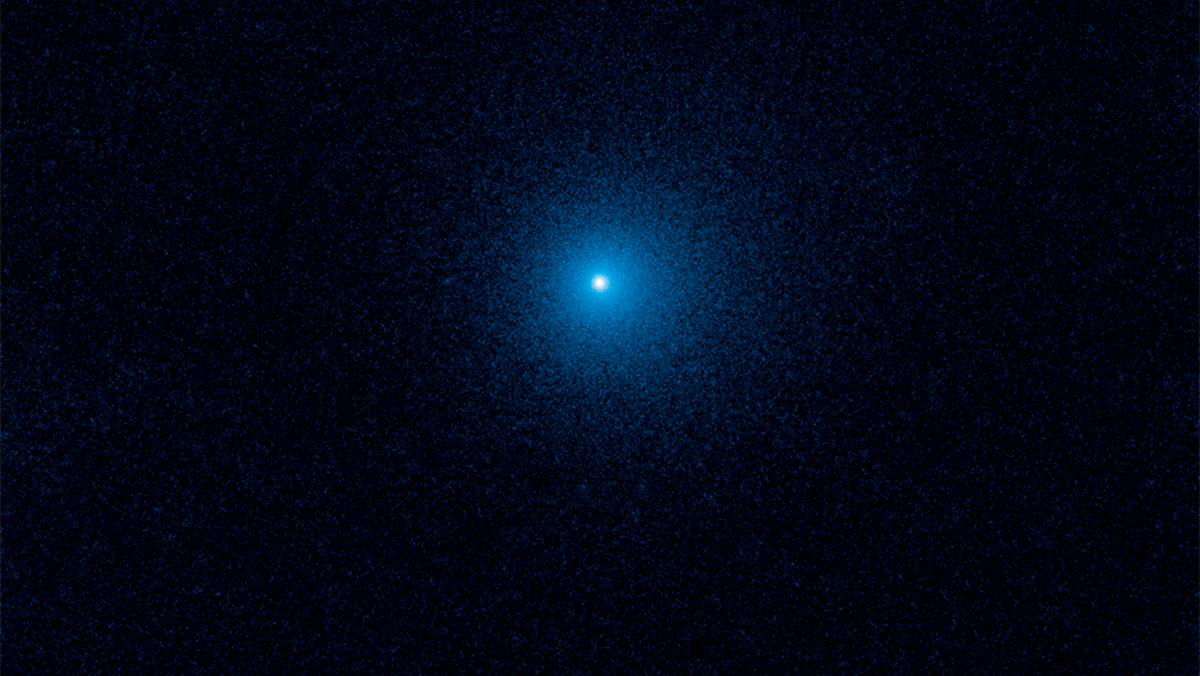A huge comet will fly by Earth in July and you might be able to see it
Get your telescopes ready, but don't count on a bright enough comet yet.

A comet first spotted in the distance in 2017 might finally be within view soon of amateur astronomers.
Comet C/2017 K2 (PANSTARRS), called K2 for short, was then the farthest active comet ever spotted, a title it recently surrendered to megacomet Comet Bernardinelli-Bernstein, detected last year. But even down one superlative, K2 is remarkable for activity. The comet began to spew gas and dust in the far outer solar system, whereas it's more typical for comets to wake up around Jupiter's orbit, much closer in.
Five years later, the icy body is finally drawing within reach of Earth and its amateur astronomers. K2's closest approach to our planet will be on July 14, and it will get closest to the sun on Dec. 19.
Related: Giant comet was active way farther from the sun than expected, scientists confirm
Assuming K2 survives the heated journey and continues to brighten, EarthSky predicts people with small telescopes will be able to spot the sojourner soon.
"It should brighten to magnitude 8 or even 7, still too dim for the unaided eye," EarthSky wrote.
Sharp-eyed viewers can usually spot stars of magnitude 6 in dark-sky conditions with no aid. In the case of this comet, you will also need areas away from light pollution to spot it with a telescope.
Breaking space news, the latest updates on rocket launches, skywatching events and more!
"The darker the skies, the better the contrast will be," EarthSky advised.
As the comet approaches us, professional observatories may be able to figure out how big its nucleus is. Early observations by the Canada–France–Hawaii Telescope (CFHT) suggested K2's nucleus could be between 18 and 100 miles (30 to 160 kilometers) wide; Hubble Space Telescope observations suggested it might be only 11 miles (18 km) at most, EarthSky said.
In 2017, Hubble imagery determined that the comet's coma (or fuzzy atmosphere) likely includes oxygen, nitrogen, carbon dioxide and carbon monoxide, all turning from solid to gas as the comet warmed.
An archival search of CFHT imagery suggested K2 was active at least as far back as 2013, when it was between the orbits of Uranus and Neptune, NASA said at the time.
All predictions for comet activity are subject to change, however. Comets are prone to falling apart or brightening unpredictably when the draw close to the intense heat and gravity of our sun. That characteristic, however, makes them all the more interesting to astronomers who want to understand how comets are put together.
Follow Elizabeth Howell on Twitter @howellspace. Follow us on Twitter @Spacedotcom and on Facebook.

Elizabeth Howell (she/her), Ph.D., was a staff writer in the spaceflight channel between 2022 and 2024 specializing in Canadian space news. She was contributing writer for Space.com for 10 years from 2012 to 2024. Elizabeth's reporting includes multiple exclusives with the White House, leading world coverage about a lost-and-found space tomato on the International Space Station, witnessing five human spaceflight launches on two continents, flying parabolic, working inside a spacesuit, and participating in a simulated Mars mission. Her latest book, "Why Am I Taller?" (ECW Press, 2022) is co-written with astronaut Dave Williams.
